I recently acquired a Scotti Model X rifle, so now we can have a set of internal photos of one (shooting and evaluation will be coming). This was one of the semiauto rifles trialed by the Italian military in the early 1930s. It’s an open-bolt, semiauto-only design, feeding 6.5 Carcano ammunition from standard Carcano clips.
© 2025 Forgotten Weapons.
Site developed by Cardinal Acres Web Development.













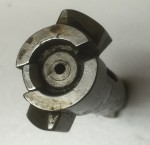
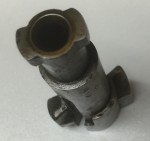
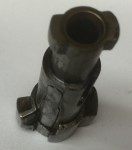





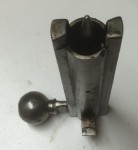

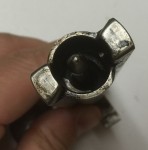

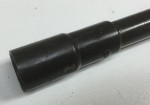


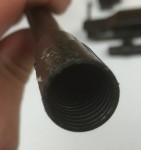






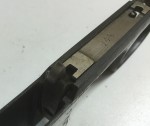
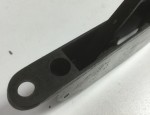
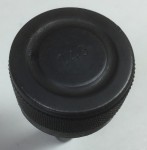
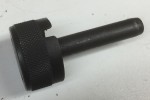

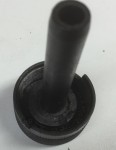
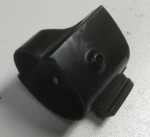
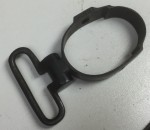
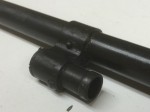
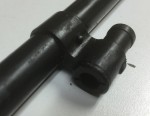


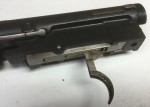

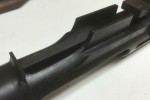

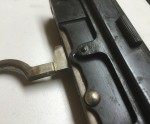

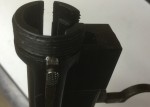
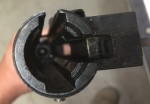




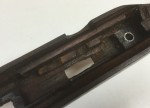



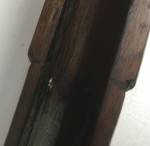





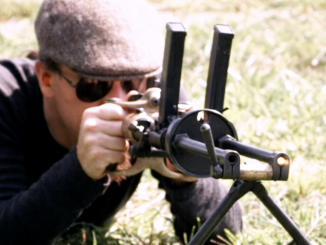

Note: the X in “Scotti model X” denotes number 10 and refers to fascist calendar (where 1922 was year zero), hence “Scotti model X” should be understand as “Scotti model 1932”
Well I never knew that, in the twelfth year of our “new” lord eh, ha ha.
Tenth even, amen.
You got all the cool toys, eh? Thanks very much for the pictures and presentation!
Could you please post a picture of the complete rifle?
That is just gorgeous!
Why is it open bolt?
I was going to say, because it would be simpler- a fixed firing pin etc, well maybe it is simpler’ish still.
According to Chinn (Machine Gun, Vol. 1), all of Scotti’s designs from pistols to automatic cannon operated on the gas-unlocked rotating-bolt principle. The machine gun and cannon generally fired from an open bolt position for cooling reasons (i.e., leaving the bolt open at the end of a burst to allow air flow through the chamber and barrel).
If the rifle fired from that position, I would expect it to be selective-fire, probably firing from the open bolt on full-auto and closed-bolt on semi-auto. (The Johnson LMG and German FG-42 worked the same way.)
Of course, loading with a 5-round Carcano en bloc clip, any “burst” would be pretty short.
BTW, what’s that knurled knob on the back of the magazine housing for? Anyone know? Ian?
cheers
eon
That’s the clip release, like on a Carcano.
Amazing! This is definitely a must-see. I am itching to see a shooting and evaluation video!
VERY VERY interesting, looking quite solid and functional.
Will you give us more on this design, please, and a range report, maybe?
gonna track some more info on this here, promise.
Yup, I certainly will be.
The prongs on the front of the bolt sleeve seem like a clever way to prevent out of battery fire. To rephrase the question, “What if they built a better idiot?”, would the gun load and fire a round if a conscript assembled the rifle without the bolt head in place? My guess is no, the firing pin would be on top of the case head, but cycling the bolt after such a malfunction might be problematic.
Are you going to do a video on it some time soon? A bit of the history and background would be interesting.
Yes, absolutely.
How’s it work then? The carrier, is hit by the piston and this unrotates the bolt within it via a camming groove/lug arrangement… The pair move back, then the carrier re-rotates it, when it returns with the bolt. But only when it’s fully over it i.e. The carrier still has some forward impetus remainng when the bolts locking lugs are aligned, so the bolt is fully forward from the open position at that point.
Or something…
Fg42’ish… Fixed firing pin in the carrier, and the carrier is attached to the piston, the carrier moves over the bolt rotating it- Locks, fires.
Looks like there is even provision for primary extraction. Fancy gun.
What’s primary extraction again, turning it a bit, before pulling?
Spent casing extraction initiation by camming action during unlocking.
The turning action breaks the cartridge case wall loose from the chamber wall, eliminating the adhesion that would otherwise tend to make the case “stick” in the chamber, with consequences like tearing the case head off and leaving the rest firmly struck.
Actions without some sort of primary extraction “break-loose” phase in the extraction/ejection cycle tend to require some sort of case lubrication. Hence the “cartridge oilers” seen on several early to mid-20th Century machine gun designs, and the requirement for pre-lubricated cases on such things as practically any automatic cannon of Oerlikon/Hispano lineage.
IIRC, some gun/cartridge combinations with this requirement got by with a hard wax applied to the cases at the factory, which seems a lot tidier than oil.
Others figured out “work-arounds”, like the fluted chamber on H&K rifles and MGs. This allows a bit of gas blowback as the bullet leaves the case to “float” the case in the chamber, getting it unstuck by gas pressure and obviating the need for a different-direction primary extraction stage. At least one experimental MG in the WW 1 period used this trick, and it became common after WW 2.
cheers
eon
Afaik the trick is to get a bit of residual pressure present when action starts to open and the case is to be extracted. At that point the brass bounced back. It is conspicuous on early auto&semi-auto weapons to see gas ports way forward. That was not helpful. It’s all in timing.
Primary extaction occurs just after the unlocking stage since any backward movement in locked state is impossible for the empty case and, rotating movement is needed only to get leverage by means of provided camming element. Tilting block breech closures also get use of this facility. All the need is a leverage construction transmitting more pover to the extractor from a gained backward movement. Oiled cases and fluted chambers are for delayed or semi locked breech closures in which backward empty case movement begins still very high gas pressure presenting in the just fired empty case. The purpose is to prevent case sticking to the chamber walls resultable a case seperation. ln locked breech guns, case obturating occurs and breechbolt backward travel begins just after of this event. Case floating is not necessary for this type of guns and tapered case body also aids for initial extraction. Primary extraction is also not necessary for positive case pull out but ensures it. Most current service rifles like M16, are made without primary extaction feature. Afaik.
There’s no primary extraction on an AR15, AR180, SA80 etc. type system. Try it without the gas and with sticky cases 🙂
There’s also no primary extraction on an HK-type, since it’s (delayed) blowback. It will extract just peachy without the extractor (might not eject properly, but ho hum). The fluting is to “float” the case so that the back end of the case doesn’t get blown off by the chamber pressure (not ripped off by the extractor in a badly set-up gas-operated system, like the SVT-40 which uses flutes to mitigate the fact that it’s not well set-up)
Chamber flutes of a locked breech rifle like STV40 indicates the excess gas pressure within the chamber at instant of unlocking action beginning. This may be caused from the facts of the unbalanced mass of gas stroke elements. The power of used round, case material features and their compatibilty with rifle mechanism are also effective and might be corrected in at the time when that rifle was designed. THese are the lessons learned and not repeated by designers followed after them since current locked breech service rifles generaly having not such kind of flaws.
“like the fluted chamber”
Soviet ShKAS machine gun also features this solution.
Chamber of ShKAS has 14 grooves. It starts 60,72mm from chamber bottom and ends 10mm from chamber bottoms. Each groove is 0,55mm width and 0,6mm deep.
So far I know this was used due to high rate-of-fire of this design (1800rpm)
If ıt were an easy way to print chamber flutes, it would be definetly much more guns having this facility but, unfortunately producing these grooves inside the chamber needs a seperate work after rifling and chamber cutting. Modern hammer forging process can not work for this purpose since the grooves are not open to the breech end. Easening the extraction is of course demanded for any kind of auto loading firearm. But the cost of the chamber grooves prevents to do this application for all guns and therefore, only the guns in absolute needs get use of it. In fact, nearly all autoloading shotguns take the advantage of this easiness in opposite side of contact faces, over the plastic shell body with thin longitidunal very swallow lines.
That would make it one of the VERY few Italian designs with two stage extraction wouldn’t it? They should have looked a little closer at this one methinks…
Thank-you for the Brilliant expose’ of this interesting Italian SAR. Of course, the Inspiration for the Bolt Mechanism is the Mannlicher M95 Straight Pull, with ingenious and functional developments to make it Self Loading.
Only Drawbacks for the common soldier ( the Majority of Italian Infantry came from Central and Southern Italy, with a very low Literacy rate and education, whilst the “northerners” were concentrated in the “specialist” corps ( sad and “politically incorrect”, but True.)was the complicated design and function.
Also, the “Wooden head” approach ( economy of ammo) with the “clip-fed mag” (only six rounds); but here there is a rational explanation.The Common soldier had a clip-fed Bolt rifle (6 rounds) so a Semi-auto, issued on the basis of one or two per squad, could use common ammo…forgetting that the Use of Semi-autos should be “universal” ( every soldier issued with one.) There again, questions of Budget etc intervened. Italy was not a “Rich” country.
This did not stop Breda putting a ten or twenty round Mag on its Breda PG ( Presa Gas–Gas Take-off) rifle of the Mid-thirties ( 6,5mm and 7×57) also with FA Option ( in 7mm).
The whole question of Self-Loading rifles in Italy has been beset (since the early 1900s), with Bureaucratic, Financial, and Strategic Mismanagement Problems
( from the 1900 Cei-Rigotti, through the 1920s “assault” cartridge models, to the Scotti X, Beretta M1931, Brixia M31, Breda PG, Armaguerra M37/39, etc.)
The Technical problems could have been overcome ( complicated designs, fragility, cost of Manufacture) as Proven by Beretta and Breda ( MAB 38A,M34 Pistol, Breda Heavy MGs and AA Cannon, etc.).
Missed Opportunity due to Human stupidity.
Doc AV
Okay, given that this fires from an open bolt, the guy holding the Scotti wouldn’t have to worry about getting a Scotti thumb, right? If this rifle had been mass-produced, would it have been better than the Breda 30 in that everyone in the squad could get flexible firepower on his own rather than require a more complicated supply list? Given a choice, I would have worked out the bugs in the Scotti and thrown out the Breda 30 for a Hotchkiss-actioned machine gun.
What would you have done?
Given everybody a Breda Model 1935 carbine (a tactical forerunner of the German MkB42-StG44 family and the Russian AK clan);
http://world.guns.ru/rifle/autoloading-rifles/it/rifle-breda-m1935-pg-e.html
Backed up by a ZB-26 type LMG. It should have worked very well in either 6.5 x 52 or 7.35 x 51 Carcano. Best of all would have been to follow the example of the Chilean Army contract for the Model 35 carbine and go to 7 x 57 Mauser for everything.
cheers
eon
Naming; ZB-26, this was on my mind when adding to your remark. It has gas pickup nearly at muzzle and I often wondered, with what kind of reserve it worked – probably due to stored energy in heavy op-rod. It may have worked with 8 x 57 Mauser but required radical rework for .303 Brit (and with greater taper).
That Breda 35 PG is my favored carbine, for it’s breech mechanism. I almost ‘fell on my face’ when I saw it first; its mechanical delight. Here comes meaning of Meccanica Bresciana:
http://en.wikipedia.org/wiki/Breda_Meccanica_Bresciana
Ok, but how many money you will need for doing that?
As states linked article:
“Breda M1935 PG rifles were somewhat heavy, of complicated design, and expensive to make.”
Apparently in 1940s and earlier the problem was not “How to build properly working self-loading rifle?” but “How to build properly working self-loading rifle AND with not too big price?”. In fact Soviet SVT-38 was more expensive to manufacture that DP light machine gun. Д. Ф. Устинов states that SVT-38 contain 143 parts (in this number 22 springs) and 12 different steel types was needed.
That’s a good point.
When comparing firearms that are supposedly for the same role (or any other machine for that matter) I think it is useful to compare not only things like weight, range, power, etc. but also number of marts, number and type of machining operations required, etc.
That is what they call in plain English a “nightmare”.
Interesting weapon. Thanks for bringing it to our attention. I think the Italians have gotten a bad rap as engineers. Yeah, they’ve done some horrible work (I’ve owned two Fiats.) But they’ve also had some very good engineers.
don’t forget the ribeyrolle:
http://en.wikipedia.org/wiki/Ribeyrolle_1918_automatic_carbine
http://iaaforum.org/forum3/viewtopic.php?f=8&t=9349&start=15
http://iaaforum.org/forum3/viewtopic.php?f=8&t=9349
http://www.municion.org/8/8x35Ribeyrolle.htm
Okay, given everyone’s feedback on my previous post, I conclude that semi-automatic rifle development during the depression era was hampered mainly by budget constraints and manufacturing limitations of the period (again, budget constraints involved with these).
“You know what runs on magic? All of the dreams of innocent children asleep in their beds. You know what doesn’t run on magic? Munition factories; they still use electricity and that costs money. No ticket, no ride!”
Optional weapon of choice questionnaire, you aren’t required to answer if you don’t wish to participate:
If in some outlandish scenario you were stuck somewhere in the desert with “horrible” Italian equipment at your disposal, what would you take if under attack by truck-riding bandits? The equipment is listed below:
“Small-arms”
1. Bodeo revolvers
2. Glisinti pistols
3. Carcano rifles of all kinds, including those chambered for 7.35x51mm
4. Scotti X and/or Breda PG
5. Fiat-Revelli modello 1914 or 1935
6. Breda M37 HMG
7. Breda M35 auto-cannon
8. Cannone-Mitragliera da 20/77 (Scotti)
9. Brixia M35 Mortar
Ground vehicles:
1. L3/35 tankette with flamethrower
2. Fiat L6/40 light tank
3. M11/39 medium tank or any of its successors
4. Lancia 1ZM
5. AB 41 armored car
6. Truck mounted Cannone da 90/53
7. Semovente 47/32
8. Semovente 75/18
9. Semovente 90/53
Aircraft
1. Breda Ba.65
2. Fiat CR.42
3. Fiat G.50 or Macchi MC.200
4. Fiat G.55, Macchi MC.202 or MC.205, Reggiane Re.2001 or Re.2005
5. Savoia-Marchetti SM.79
6. Caproni Ca.335
Or, per the usual, screw the limitations and add your favorite toys to the lists. Just don’t flak me. I did say that the “game” was optional and that you didn’t have to respond to it. Please be humane in your criticism.
**************
Or, per the usual, screw the limitations and add your favorite toys to the lists. Just don’t flak me. I did say that the “game” was optional and that you didn’t have to respond to it. Please be humane in your criticism.
*********
beretta submachine gun:
https://www.youtube.com/watch?v=jLErRfvbeeY
colt walker… made by uberti 🙂
Okay, so much for the bandits on the trucks. How do you counter the tanks that might be around?
Figure out which way they have to come in and mine the approach, preferably in a narrow cut where one deadlined tank can block the road badly enough that they can’t get around it.
I don’t know the designations, but I do know my one uncle (Col. U.S. Army Corps of Engineers, North Africa, Italy and Austria from Torch to VE Day) had a healthy respect for Italian mines. Unlike a lot of their ordnance, they generally worked very reliably, and they’d blow up heavy construction equipment, let alone the tanks of the era. (He stated that a “tug-of-war” or “push fight” between one of his heavy bulldozers and an M4 Sherman wouldn’t be a happy event for the Sherman.)
cheers
eon
Most Worthy and Honorable Mr. Cherndog:
Tiger pits and punji sticks smeared with hash oil; they will be the happiest casualties of the war.
[inserts Wilhelm scream] Well someone around these parts had a bad day. Dried in the sun and then shish-kabobbed like roast pork…
The operating system of the Scotti rifle is fascinating because it is practically unique. I don’t know of any other rifle that combines gas operation and blowback. It is truly a DELAYED blowback rather than a pure RETARDED blowback as are the roller-locked, Blish, and similar mechanical-disadvantage systems. The bolt locking lugs are angled so they will unlock under chamber pressure, but there is a mechanical chock that prevents bolt rotation. The bolt remains positively locked until the bullet passes the gas port in the barrel. That length of time constitutes the “delay”. Gas then enters a cylinder and pushes a piston to kick out the chock, which frees the bolt to spin open (a very brief stage of retarded blowback) and thereafter cycle like a blowback.
The conception is fascinating.
M